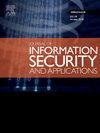HExNet:通过分层cnn和多级特征归属增强恶意软件分类
IF 3.7
2区 计算机科学
Q2 COMPUTER SCIENCE, INFORMATION SYSTEMS
Journal of Information Security and Applications
Pub Date : 2025-10-07
DOI:10.1016/j.jisa.2025.104207
引用次数: 0
摘要
不断变化的恶意软件构成了重大威胁,因为它经常绕过传统的防御措施。本文介绍了HExNet,一种分层可解释卷积神经网络(CNN)架构,旨在提高恶意软件分析和加强安全防御。认识到恶意软件的日益复杂,HExNet利用双重图像表示,将汇编助记符和恶意软件的原始字节码转换为深入模式识别的视觉表示。该架构针对性能和安全相关性进行了优化,集成了多层次功能,以提高检测精度。为了增加信任和促进安全审计,HExNet结合了SHAPley加性解释(SHAP)、类激活图(CAM)和GIST描述符,为模型的分类过程提供了透明的见解。t-SNE可视化进一步展示了HExNet有效分离恶意软件家族的能力,有助于安全情报。在微软恶意软件分类挑战(BIG 2015)数据集上进行评估,HExNet的总体f1得分为0.9890,其中三个恶意软件家族达到了完美的f1得分1.0,其余六个恶意软件家族达到了接近最优的值。为了评估泛化能力,我们在VirusShare收集的26401个样本的自定义数据集上进一步测试了HExNet,其中所提出的模型达到了f1得分0.9724,证明了在不同恶意软件数据集上的泛化性能。本文章由计算机程序翻译,如有差异,请以英文原文为准。
HExNet: Enhancing malware classification through hierarchical CNNs and multi-level feature attribution
The ever-shifting landscape of malware presents a significant threat, as it routinely circumvents traditional defenses. This paper presents HExNet, a Hierarchical Explainable Convolutional Neural Network (CNN) architecture, designed to improve malware analysis and bolster security defenses. Recognizing the growing sophistication of malware, HExNet leverages a dual image representation, converting assembly mnemonics and raw bytecode of malware into visual representations for in-depth pattern recognition. The architecture, optimized for performance and security relevance, integrates multi-level features to enhance detection accuracy. To increase trust and facilitate security audits, HExNet incorporates SHAPley Additive Explanations (SHAP), Class Activation Maps (CAM), and GIST descriptors, providing transparent insights into the model’s classification process. t-SNE visualizations further demonstrate HExNet’s ability to effectively separate malware families, aiding in security intelligence. Evaluated on the Microsoft Malware Classification Challenge (BIG 2015) dataset, HExNet achieves an overall F1-score of 0.9890, with three malware families reaching a perfect F1-score of 1.0 and the remaining six families achieving near-optimal values. To evaluate the generalization capability, we further tested HExNet on a custom dataset consisting 26,401 samples collected from VirusShare, where the proposed model achieved an F1-score of 0.9724, demonstrating generalization performance across diverse malware datasets.
求助全文
通过发布文献求助,成功后即可免费获取论文全文。
去求助
来源期刊

Journal of Information Security and Applications
Computer Science-Computer Networks and Communications
CiteScore
10.90
自引率
5.40%
发文量
206
审稿时长
56 days
期刊介绍:
Journal of Information Security and Applications (JISA) focuses on the original research and practice-driven applications with relevance to information security and applications. JISA provides a common linkage between a vibrant scientific and research community and industry professionals by offering a clear view on modern problems and challenges in information security, as well as identifying promising scientific and "best-practice" solutions. JISA issues offer a balance between original research work and innovative industrial approaches by internationally renowned information security experts and researchers.
 求助内容:
求助内容: 应助结果提醒方式:
应助结果提醒方式:


